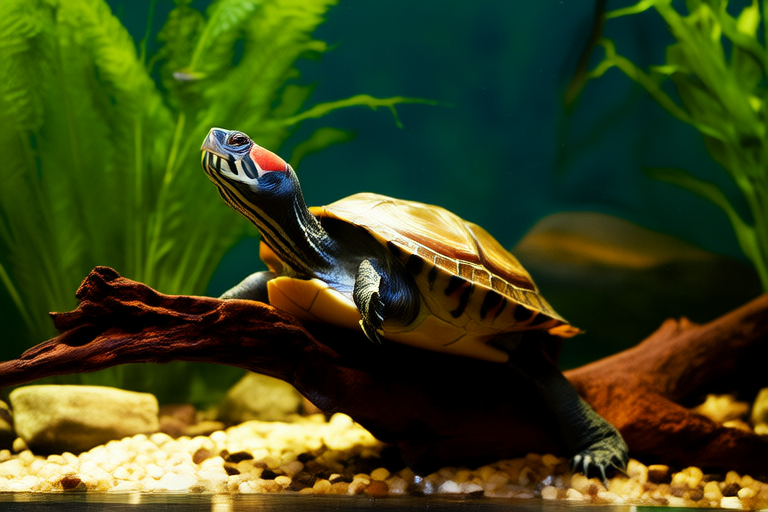Red-eared Slider Care: Common Mistakes Pet Owners Should Avoid
The red-eared slider (Trachemys scripta elegans) is one of the most popular turtle species kept as pets worldwide. Known for their vibrant colors and relatively low maintenance, these semi-aquatic turtles have captured the hearts of many animal enthusiasts. However, despite their widespread appeal, providing optimal care for red-eared sliders can be more challenging than it initially appears. Understanding their basic care needs is crucial for ensuring the health and longevity of these fascinating creatures.
Basic Care Needs
Red-eared sliders require a balanced environment that caters to both their aquatic and terrestrial habits. A well-maintained habitat includes a spacious tank or pond, appropriate temperature control, suitable substrate, and access to basking areas. They need clean water for swimming and a dry area where they can bask under UVB lighting. Proper nutrition is also essential, with a diet rich in vegetables, fruits, and occasional protein sources like insects or fish.
Inadequate Tank Size
One of the most common mistakes made by red-eared slider owners is providing an insufficiently sized enclosure. Many beginners underestimate the space requirements for these growing reptiles. As juveniles, sliders might seem small enough to fit comfortably in a standard aquarium, but they grow rapidly and can reach sizes up to 30 cm (12 inches) in diameter. An adult slider requires at least 40 gallons of water per inch of shell length, which means a fully grown turtle needs a tank holding over 120 gallons of water.
Solution: Invest in a larger tank or outdoor pond early on. For smaller turtles, consider upgrading the tank as they grow. Ensure the tank has ample space for swimming and basking. The rule of thumb is that the tank should be at least twice as long as the turtle’s full body length.
Improper Heating
Maintaining the right temperature is critical for the health of your red-eared slider. These turtles are cold-blooded, relying on external heat sources to regulate their body temperature. Water temperatures should ideally range between 75°F and 80°F (24°C to 27°C), while basking areas should be around 90°F (32°C). Insufficient or uneven heating can lead to respiratory infections, poor digestion, and weakened immune systems.
Solution: Use high-quality submersible heaters to maintain water temperatures and provide a heat lamp for the basking area. Position thermometers in both the water and the basking spot to monitor temperatures accurately. Regularly check the functioning of heaters and lamps, replacing them if necessary.
Incorrect Diet
Feeding red-eared sliders improperly is another frequent error among pet owners. Many people assume that these turtles will eat anything, leading to overfeeding or feeding inappropriate foods. A balanced diet should consist primarily of leafy greens, supplemented with pellets designed for aquatic turtles, and occasional treats like earthworms or small pieces of fish. Over-reliance on commercial pellets without adding variety can result in nutritional deficiencies.
Solution: Feed your turtle a varied diet, focusing on fresh vegetables and fruits. Offer protein-rich foods sparingly, no more than once or twice a week. Limit the amount of food given in one sitting to avoid overeating, which can cause obesity and related health issues.
Lack of UVB Lighting
UVB lighting is vital for red-eared sliders because it helps them synthesize vitamin D3, which is essential for calcium absorption and bone health. Without adequate exposure to UVB light, turtles may develop metabolic bone disease (MBD), characterized by soft shells and weak limbs. Many owners neglect this aspect of care, either by forgetting to install UVB bulbs or failing to replace them regularly.
Solution: Install a high-quality UVB bulb specifically designed for reptiles in the basking area. Place the light within 12 to 18 inches of the turtle’s basking spot. Replace the bulb every six months, even if it still appears functional, as UVB output diminishes over time. Ensure the bulb is positioned correctly to provide direct exposure during basking periods.
Maintaining a Healthy Habitat
To keep your red-eared slider healthy, maintaining a clean and stimulating environment is paramount. Regular water changes are necessary to prevent bacterial growth and reduce ammonia levels, which can harm the turtle’s respiratory system. Clean the tank thoroughly at least once a week, removing any uneaten food or waste promptly. Additionally, provide enrichment through varied substrates and hiding spots to encourage natural behaviors.
Regular veterinary check-ups are equally important. Schedule annual visits with a veterinarian who specializes in reptiles to monitor your turtle’s overall health. During these appointments, the vet can perform blood tests, check for parasites, and address any potential health concerns before they become serious issues.
Conclusion
Caring for red-eared sliders involves more than just providing food and shelter; it requires attention to detail and commitment to creating a balanced ecosystem that supports their physical and psychological well-being. By avoiding common pitfalls such as inadequate tank size, improper heating, incorrect diet, and lack of UVB lighting, you can ensure your pet enjoys a long and healthy life. Remember, investing time and effort into understanding your turtle’s specific needs will pay off in the form of a happy, thriving companion.
